 “Would you like a single piece of sheet music that contains all your favourite pieces, and never needs to be turned over?”
“Would you like a single piece of sheet music that contains all your favourite pieces, and never needs to be turned over?”
Well, duh! yes, of course. No musician has ever been born who didn’t burst into a fury of invective when playing a piece from music, when the page turned itself back three seconds after you turned it over. No musician has ever been born who didn’t lose a sheet of music. No player has ever failed to snap the spine of a book of music, trying to get it to stay on the page you’re playing.
I work with e-paper – a lot. Of course, there is none on the market yet, apart from something pretty primitive from Sony and something slightly less primitive from iRex; but I spend my time playing with the products of 2008 – and this week, I got to see some of them “in the flesh” as part of a design competition at the London Central Saint Martins College of Art and Design. And it was astonishing to me just how many bright ideas are buried in the simple concept of an e-Page.
An e-Page is related to the concept of an e-book reader in the same way that an iPod is related to a CD player. Each is a use of e-paper, designed as part of an entire ecosphere; with authors, distributors, performers and hardware makers and customers all considered, fitted into the big picture, and happy with innovative leaps into the wonderful future.
 The universal piece of music wasn’t even the first prize winner in this competition. It was a contest sponsored by one of the world’s leading e-paper technology designers, Plastic Logic, which has demonstrated a flexible sheet of A5 “paper” that has the contrast and readability of real paper, the flexibility of soft cardboard, and the power consumption of a watch. And the prize went to something that is, in the end, “just a book.”
The universal piece of music wasn’t even the first prize winner in this competition. It was a contest sponsored by one of the world’s leading e-paper technology designers, Plastic Logic, which has demonstrated a flexible sheet of A5 “paper” that has the contrast and readability of real paper, the flexibility of soft cardboard, and the power consumption of a watch. And the prize went to something that is, in the end, “just a book.”
I can’t give all the secrets of the contest away; Plastic Logic is planning a press announcement for later this week, where all the short-listed entries will be showcased. My job was to be one of the judges of the competition (in my role as Founder of AFAICS Research along with my partner, Nick Hampshire, and Tony Chambers, Creative Director of Wallpaper – as well as a senior executive from Plastic Logic, and technology evangelist and financier, Herman Hauser of Amadeus Capital. They were there to make sure the technology was of value in the market, of course.
But it was a genuine eye-opener for me.
 When you invent a new technology, you always start off by producing something which you know has a market already, and which you think you can do better.
When you invent a new technology, you always start off by producing something which you know has a market already, and which you think you can do better.
For example, if you wander around the woollen mills of the early industrial revolution, you’ll see machinery which faithfully replicates the actions and movements of the people who wound bobbins or spun thread. I remember seeing one room full of spindles that “walked across the room” the way a human would have done, winding up wool, then walked back to the wall pulling out a few new feet of thread, before winding up again.
Similarly, the first e-paper concepts take things which are made of paper, and where it’s more robust to use e-paper. One concept that was actually my favourite, was a replacement for tags for patients. In a sense, you could say “It gets rid of the printer” and at a simple level, that’s exactly what it does. But it does far more; because the data is held in digital form, it’s machine readable as well as machine writeable, and the whole thing becomes part of a holistic system.
After the afternoon’s judging, I went home, with my mind buzzing. We sat down and had an impromptu Board Meeting of AFAICS Research, and hopefully, over the next few weeks, I’ll be able to pass on some of our ideas. But the nub of it is: “We really need to start planning the e-Page industry!” because if we don’t, we’re going to end up with a hundred pieces of a jig-saw puzzle, none of which make up the same picture.
 Purveyor of fluffy, family-friendly feature films, Walt Disney has become the latest Hollywood studio to offer movies for sale on the Internet, with a new service offering films via the CinemaNow online service.
Purveyor of fluffy, family-friendly feature films, Walt Disney has become the latest Hollywood studio to offer movies for sale on the Internet, with a new service offering films via the CinemaNow online service.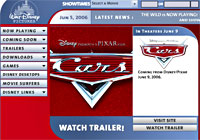 Instead, the movies can only be copied to a total of three other devices (including laptop PCs and handheld electronic devices) supporting CinemaNow’s copyright-protection technology.
Instead, the movies can only be copied to a total of three other devices (including laptop PCs and handheld electronic devices) supporting CinemaNow’s copyright-protection technology.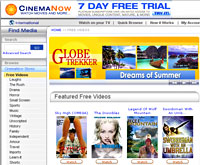 “We take that as a real nice vote of confidence,” he added, before trotting off to the litter tray.
“We take that as a real nice vote of confidence,” he added, before trotting off to the litter tray. Dandruff shakers looking forward to some geriatric rocking with Guns’n’Roses at the Hammersmith Apollo tomorrow night can forget all about keeping their tickets as a memento after the show.
Dandruff shakers looking forward to some geriatric rocking with Guns’n’Roses at the Hammersmith Apollo tomorrow night can forget all about keeping their tickets as a memento after the show.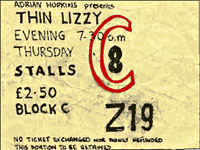 Moreover, we don’t even like the idea of having tickets on our mobiles. What happens if your battery runs out, or if you delete your text message by accident?
Moreover, we don’t even like the idea of having tickets on our mobiles. What happens if your battery runs out, or if you delete your text message by accident? Regardless of what punters want, The Man is pressing ahead for a bright virtual ticket future, with O2 working with technology provider, Mobiqa to provide m-tickets to this month’s O2 Wireless Festival in London – and in their first week, they managed to shift a hefty £100,000 worth of the things.
Regardless of what punters want, The Man is pressing ahead for a bright virtual ticket future, with O2 working with technology provider, Mobiqa to provide m-tickets to this month’s O2 Wireless Festival in London – and in their first week, they managed to shift a hefty £100,000 worth of the things. Look, we know there’s something a bit sad about wanting a PC that glows brightly with useless dials, flashing lights and obscure read outs, but we just couldn’t hide our juvenile excitement when we saw this new gizmo from Japanese manufacturer Scythe.
Look, we know there’s something a bit sad about wanting a PC that glows brightly with useless dials, flashing lights and obscure read outs, but we just couldn’t hide our juvenile excitement when we saw this new gizmo from Japanese manufacturer Scythe. The panel is dominated by a large, circular colour LCD display giving readouts for computer temperature (centigrade/Fahrenheit, with up to four temperature sensors supported), fan speed, warning temperature and current time.
The panel is dominated by a large, circular colour LCD display giving readouts for computer temperature (centigrade/Fahrenheit, with up to four temperature sensors supported), fan speed, warning temperature and current time.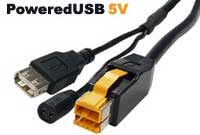 Pricing and availability to be announced. We’ll take two please!
Pricing and availability to be announced. We’ll take two please!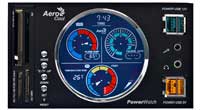 PoweredUSB
PoweredUSB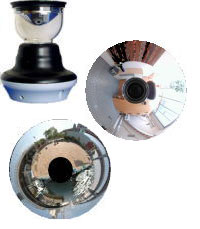 Japanese manufacturers Suekage are hoping that their new SOIOS 55-Cam 360’s unique ability to provide panoramic viewing angles and then relay them to 3G phones may make them a hit in the home security market.
Japanese manufacturers Suekage are hoping that their new SOIOS 55-Cam 360’s unique ability to provide panoramic viewing angles and then relay them to 3G phones may make them a hit in the home security market.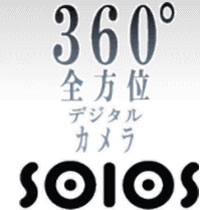 Well, that’s what their blurb said, and we’re not in the mood to get out a protractor and argue the toss, but that basic principle is: big curvy mirror = 360 coverage.
Well, that’s what their blurb said, and we’re not in the mood to get out a protractor and argue the toss, but that basic principle is: big curvy mirror = 360 coverage.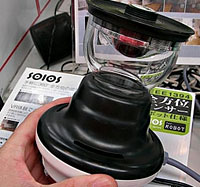 The advantage of this system is that the webcam’s 360 degree all-seeing eye does away with the need for expensive motorised systems
The advantage of this system is that the webcam’s 360 degree all-seeing eye does away with the need for expensive motorised systems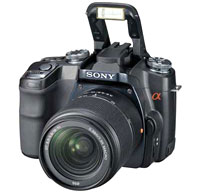 Some details of Sony’s eagerly-awaited debut into the dSLR market have begun to emerge online.
Some details of Sony’s eagerly-awaited debut into the dSLR market have begun to emerge online.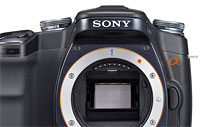 This feature – inherited from Minolta -begins autofocus and auto-exposure as soon as it detects your peeper gazing through the viewfinder. Neat
This feature – inherited from Minolta -begins autofocus and auto-exposure as soon as it detects your peeper gazing through the viewfinder. Neat The onboard high-speed autofocus is said to sport 4 focus modes – Single-shot AF; Direct Manual Focus; AF Automatic; AF Continuous – with centre-weighted, spot and 40-segment honeycomb pattern metering modes.
The onboard high-speed autofocus is said to sport 4 focus modes – Single-shot AF; Direct Manual Focus; AF Automatic; AF Continuous – with centre-weighted, spot and 40-segment honeycomb pattern metering modes. There’s been some deep rumblings of discontent from tens of thousands of customers trying to sign up to Carphone Warehouse’s offer of “free” broadband.
There’s been some deep rumblings of discontent from tens of thousands of customers trying to sign up to Carphone Warehouse’s offer of “free” broadband.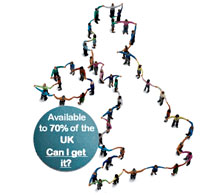 The TalkTalk offer gives punters unlimited landline telephone calls and broadband access for £20 per month, with a one-off £29.99 connection fee.
The TalkTalk offer gives punters unlimited landline telephone calls and broadband access for £20 per month, with a one-off £29.99 connection fee. The Independent has reported that chatrooms have been “inundated” with punters venting their frustration over their attempts to sign up to the service, with the TalkTalk website offering a rueful apology on their website:
The Independent has reported that chatrooms have been “inundated” with punters venting their frustration over their attempts to sign up to the service, with the TalkTalk website offering a rueful apology on their website: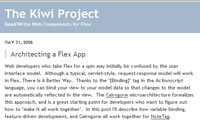 Adobe has made available a proof-of-concept version of their new productivity tool,
Adobe has made available a proof-of-concept version of their new productivity tool, 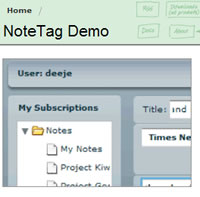 As bloggers
As bloggers 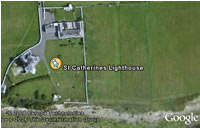 Google Earth/Maps
Google Earth/Maps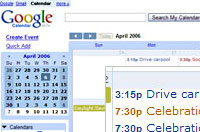 It’s uncertain how much information they do store, but it could be quite considerable. They actually might not know it’s you personally, but your computer. Google uses cookies which are used to track your personalisation settings, but they can store a lot more info, though Google are likely to just use the cookie as the identifier which enables them to quickly personalise things.Just looking at the information they could store when you do a search, it’s the search criteria itself, then which sites you clicked through to. But that can be combined with other info like what Google Map info you looked at, who you emailed through Google Mail and your previous search history. That may lead to a bleak picture if you’re committing illegal acts.The other side to it all is that the processing of all this information is extremely resource hungry and though Google are particularly good at correlating information, they might not bother. They will for some aspects, but most of the time it’s probably not worth it and they’ll keep succinct summarized information.If the authorities want to know what your doing, it’s actually much easier for them to go to your ISP and request the information from them (if they are running caching equipment which speeds up Web access for all users, they don’t just know what searches you’ve been doing, but every Website you’ve accessed and everything you’ve down or uploaded).The Future
It’s uncertain how much information they do store, but it could be quite considerable. They actually might not know it’s you personally, but your computer. Google uses cookies which are used to track your personalisation settings, but they can store a lot more info, though Google are likely to just use the cookie as the identifier which enables them to quickly personalise things.Just looking at the information they could store when you do a search, it’s the search criteria itself, then which sites you clicked through to. But that can be combined with other info like what Google Map info you looked at, who you emailed through Google Mail and your previous search history. That may lead to a bleak picture if you’re committing illegal acts.The other side to it all is that the processing of all this information is extremely resource hungry and though Google are particularly good at correlating information, they might not bother. They will for some aspects, but most of the time it’s probably not worth it and they’ll keep succinct summarized information.If the authorities want to know what your doing, it’s actually much easier for them to go to your ISP and request the information from them (if they are running caching equipment which speeds up Web access for all users, they don’t just know what searches you’ve been doing, but every Website you’ve accessed and everything you’ve down or uploaded).The Future 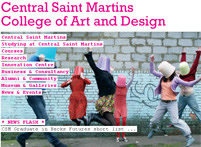 “Would you like a single piece of sheet music that contains all your favourite pieces, and never needs to be turned over?”
“Would you like a single piece of sheet music that contains all your favourite pieces, and never needs to be turned over?” The universal piece of music wasn’t even the first prize winner in this competition. It was a contest sponsored by one of the world’s leading e-paper technology designers, Plastic Logic, which has demonstrated a flexible sheet of A5 “paper” that has the contrast and readability of real paper, the flexibility of soft cardboard, and the power consumption of a watch. And the prize went to something that is, in the end, “just a book.”
The universal piece of music wasn’t even the first prize winner in this competition. It was a contest sponsored by one of the world’s leading e-paper technology designers, Plastic Logic, which has demonstrated a flexible sheet of A5 “paper” that has the contrast and readability of real paper, the flexibility of soft cardboard, and the power consumption of a watch. And the prize went to something that is, in the end, “just a book.”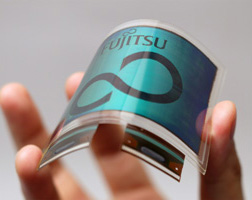 When you invent a new technology, you always start off by producing something which you know has a market already, and which you think you can do better.
When you invent a new technology, you always start off by producing something which you know has a market already, and which you think you can do better.